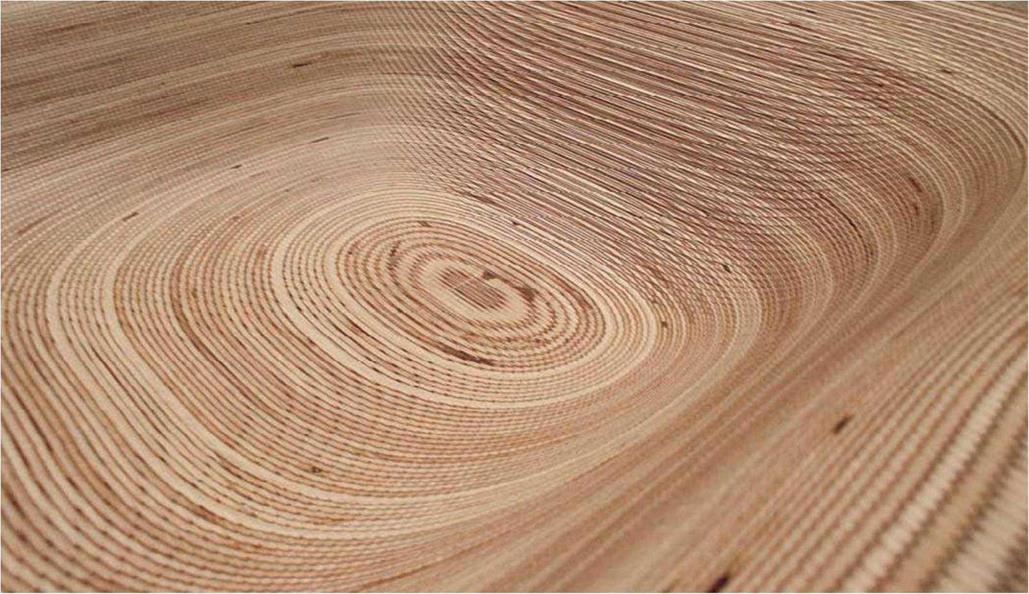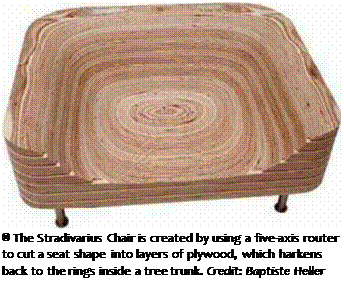 but I knew some interference would be the result of cutting into plywood with a machine and forming it. I didn’t realize quite how complex it would be. It was quite a surprise.”
but I knew some interference would be the result of cutting into plywood with a machine and forming it. I didn’t realize quite how complex it would be. It was quite a surprise.”
Ever since he carved a wooden fish as a nine-year-old boy, wood has always fascinated Sindall. “I’ll never forget it. I was doing it for a school project and I could see the fish, I could feel it.” When he became a furniture designer some years later, he rekindled his love affair with the material. “As a furniture designer, wood is one of the first materials you come across, and you discover that it’s not inert, it has a life, and age, and history behind it.” The internal rings that carry the personal life history of a tree are particularly inspiring to him. But, he didn’t want to cut down a tree just to be able to cut open the trunk. So, for the Stradivarius, he layered and then cut into high-quality plywood to mimic the look of the original tree.
He began by drawing on the computer to render the stratum and the shape of the seat, both of which were developed more by feel more than by measurement. “I think when you make pieces of furniture,” says Sindall, “You understand the relationship between the curve and the human body. With other pieces that I have sculpted by hand, you’re not looking at the curve in a stylistic sense; you’re imagining a hand grasping an object or your back resting against the backrest—you’re seeing the relationship of the body and the form.” As sensual as this approach may be, Sindall doesn’t only rely on, but actually relishes working on a computer to make his ideas real. “I love having the opportunity to experiment with materials and machines and the use of computer, which I believe is not just a cold, inanimate object. It can be harnessed in such a way that you can arrive at very animated sort of vibration, in a way. I’ve got this tool, I’ve got this program, it seems very inert and cold, but what can I do to make it live?” he continues. “We came full circle because the result is quite a natural looking object. It looks like it was cut out of a tree trunk, but it’s not. It’s not natural because the wood has gone through its whole product lifecycles and come back to a trunk of wood.”
The Stradivarius was a one-off creation made for an exhibition. Sindall used both technology and the skills of a group of high – end cabinetmakers to make the seat. “To achieve it, I have to work with a computer program to create a 3D object in virtual space. This information is then transferred to a machine, a five – axis router that receives the computer-generated information, and transfers it into coordinates,” he explains. “The block is assembled of different layers of very good quality plywood which was assembled in different layers. And then the machine’s got a drill bit that takes the material out. It’s a really beautiful thing to watch. It’s extremely precise, down to ^ of a millimeter
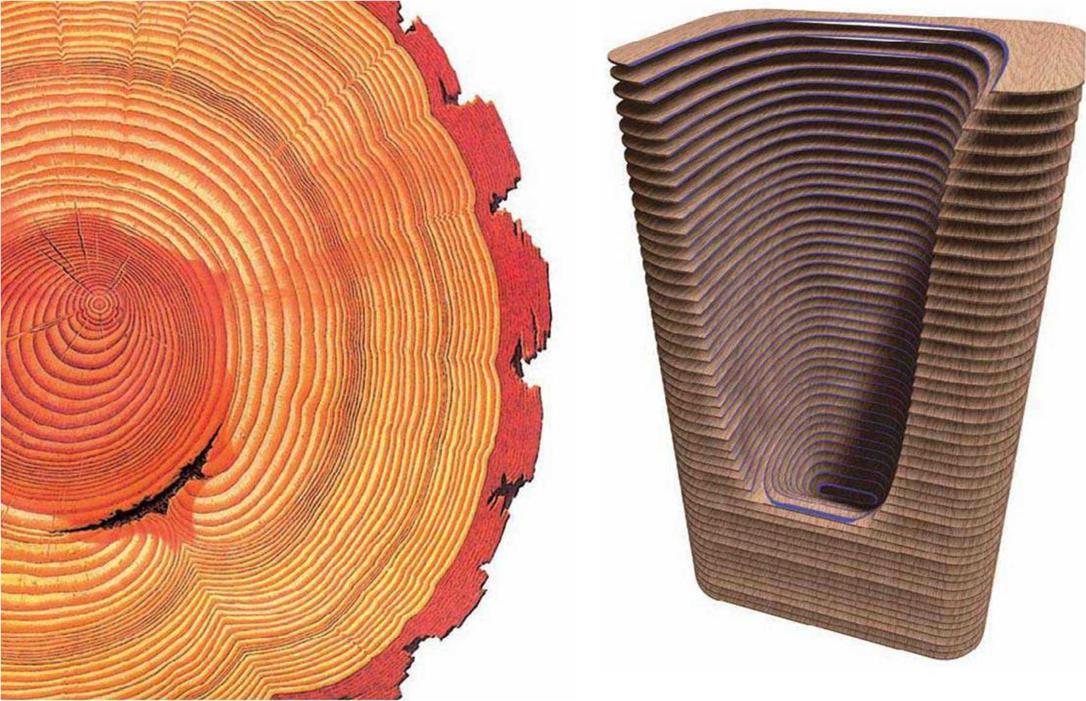
![]()

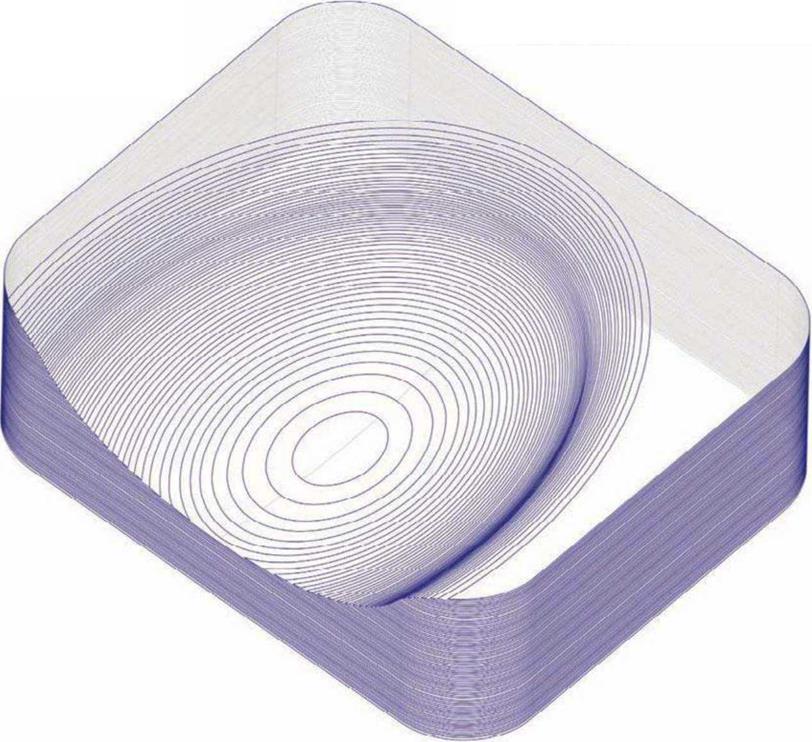 The stories told by the rings of a tree and the sensual beauty of objects sculpted from wood were the initial inspiration for the Stradivarius Chair. Credit: Igor Ternet
The stories told by the rings of a tree and the sensual beauty of objects sculpted from wood were the initial inspiration for the Stradivarius Chair. Credit: Igor Ternet
A wire frame drawing “shows the transition between the tree cross section and the object. A wood block becomes an object just with the cut,” according to Sindall. Credit: Matt Sindall
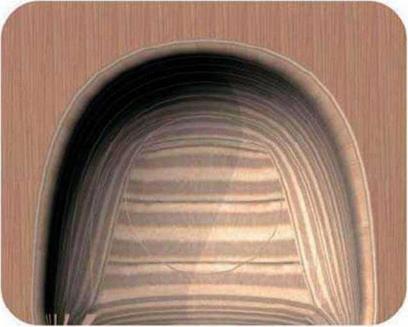 © The numeric milling process uses a computer drawing to direct a router to cut in any of five different axes. Used in woodworking applications like cabinetmaking, Sindall used the technology to create a piece of furniture that is more sculpture than chair.
© The numeric milling process uses a computer drawing to direct a router to cut in any of five different axes. Used in woodworking applications like cabinetmaking, Sindall used the technology to create a piece of furniture that is more sculpture than chair.

Credit: Matt Sindall
 © A computer-generated image shows further details of the chair, including the exterior serration in the layers of plywood and the metal feet picked up at an IKEA store. Credit: Matt Sindall
© A computer-generated image shows further details of the chair, including the exterior serration in the layers of plywood and the metal feet picked up at an IKEA store. Credit: Matt Sindall

|
|
It is this convergence of the natural with the technical in order to mimic the natural that Sindall finds so interesting. “My main preoccupation when I design a piece of furniture is not really concerned about comfort or style in the sense that it’s about a formal object,” he says. “Over and above the fact that it’s a functional object, I’m trying to bring out other elements, other stories. I don’t really want to ram these down people’s throats, it’s very much up to the observer, the person who sees or uses the object to make up his own mind. You give people signs, or messages hidden in the surface and the treatment of the surface that brings out their own impressions, their own themes about what an object is or what a surface is.”
The feet, however, have a much more prosaic story to tell. He picked them up from an IKEA furniture store. Sindall saw the feet on a piece of kitchen furniture and wandered around the store all morning before finding them as an individual item for purchase. “They’re stainless steel feet with a nice proportion,” he says. “It’s slightly antidesign. I saw them, and I liked them. There’s no point in redrawing something that you can find. I like the diameter of the stainless steel tube. For the size of the chair, this very solid mass of wood on these very fine legs creates this sort of finesse.”
For all his interest in surfaces, and all the surface interest in the Stradivarius, Sindall contends that he’s not “100 percent happy with it. I’m not happy with the outside because I think it’s detracting from what’s happening in the surface. In a way,” he says, “it’s too designed. It’s confusing the message. I think it would have been interesting if I’d wrapped it in a brightly colored laminate so the levels of plywood were not seen on the outside. It would create mystery.” But Sindall accepts that this dissatisfaction is inevitable. “Designers suffer from being designers in a sense,” he says. And the piece, like any project, has other lessons to teach him. “When I started, it was all about the outer surface, the skin,” he says. “But this has woken up something in me, gotten me thinking about what’s going on inside, in the core of the object. This is what it’s given me. There’s a whole world to explore in the core of a piece of furniture.”
And sometimes, the world conjured by a particular furniture object has it’s own, inherent and straightforward sweetness. Says Sindall, “I always come back to a Mille Feuille pastry. I love that pastry. When I see one, I have to buy one. This piece keeps coming back to that. When I look at it, I can almost taste the pastry.”

